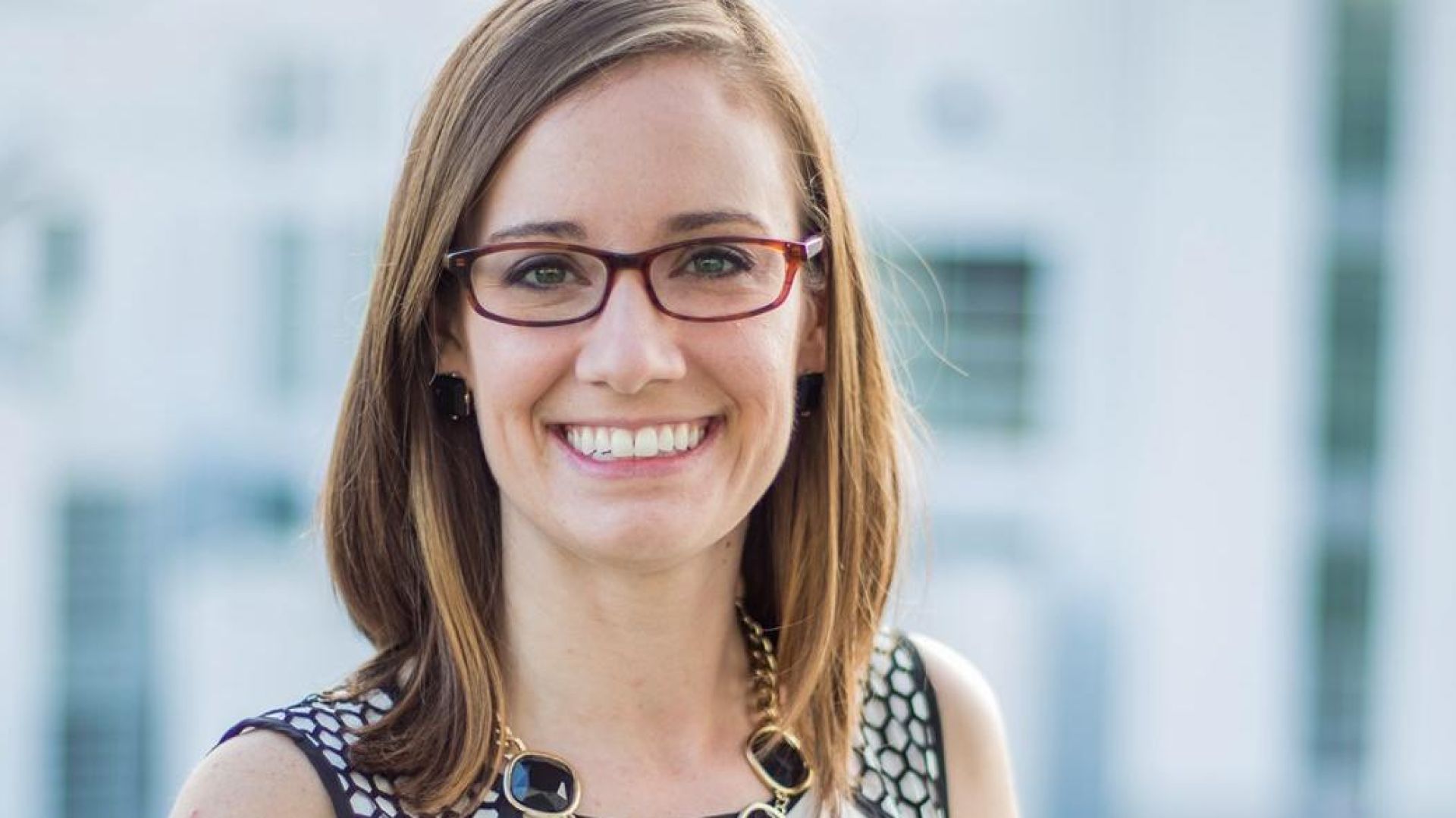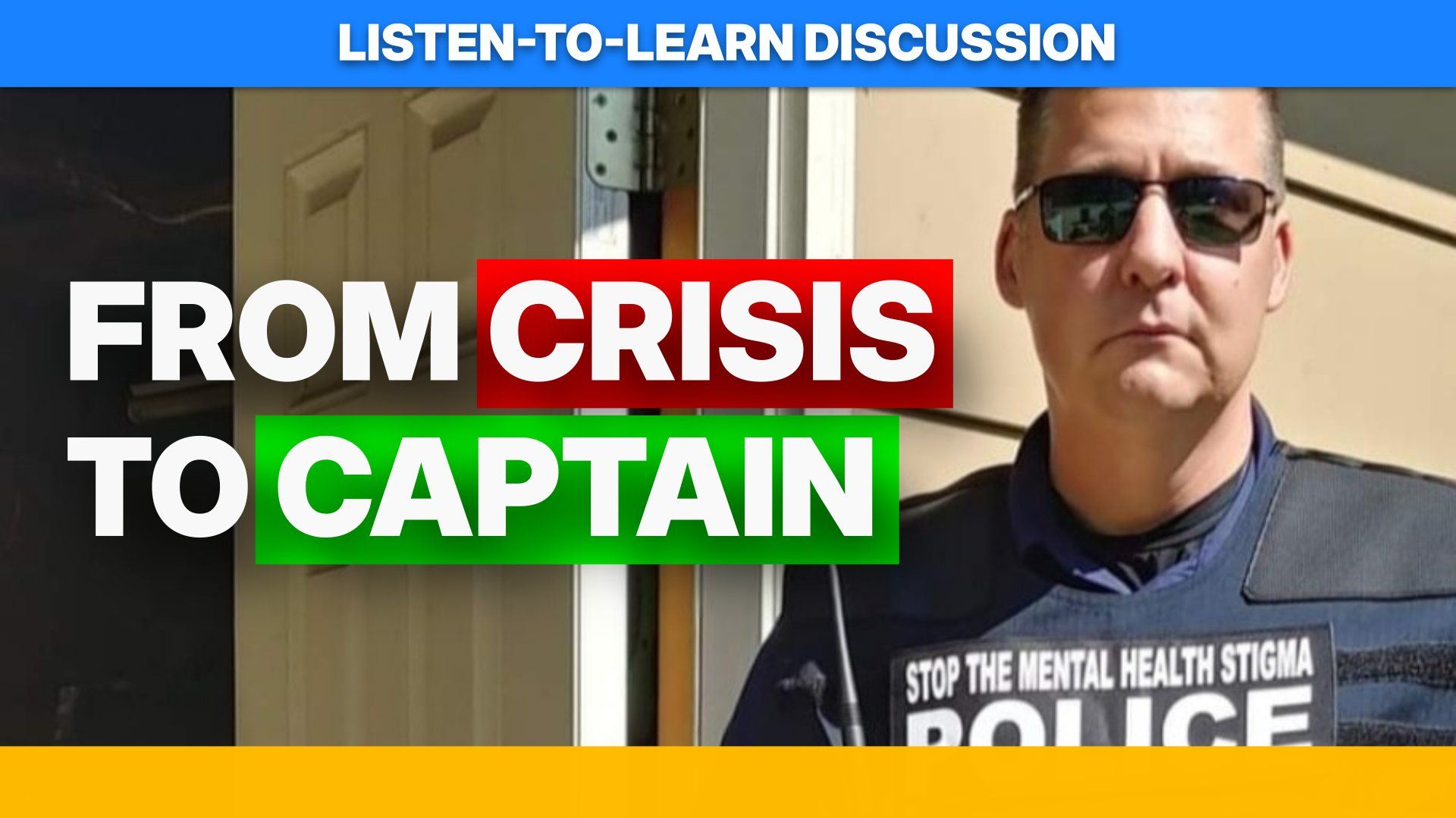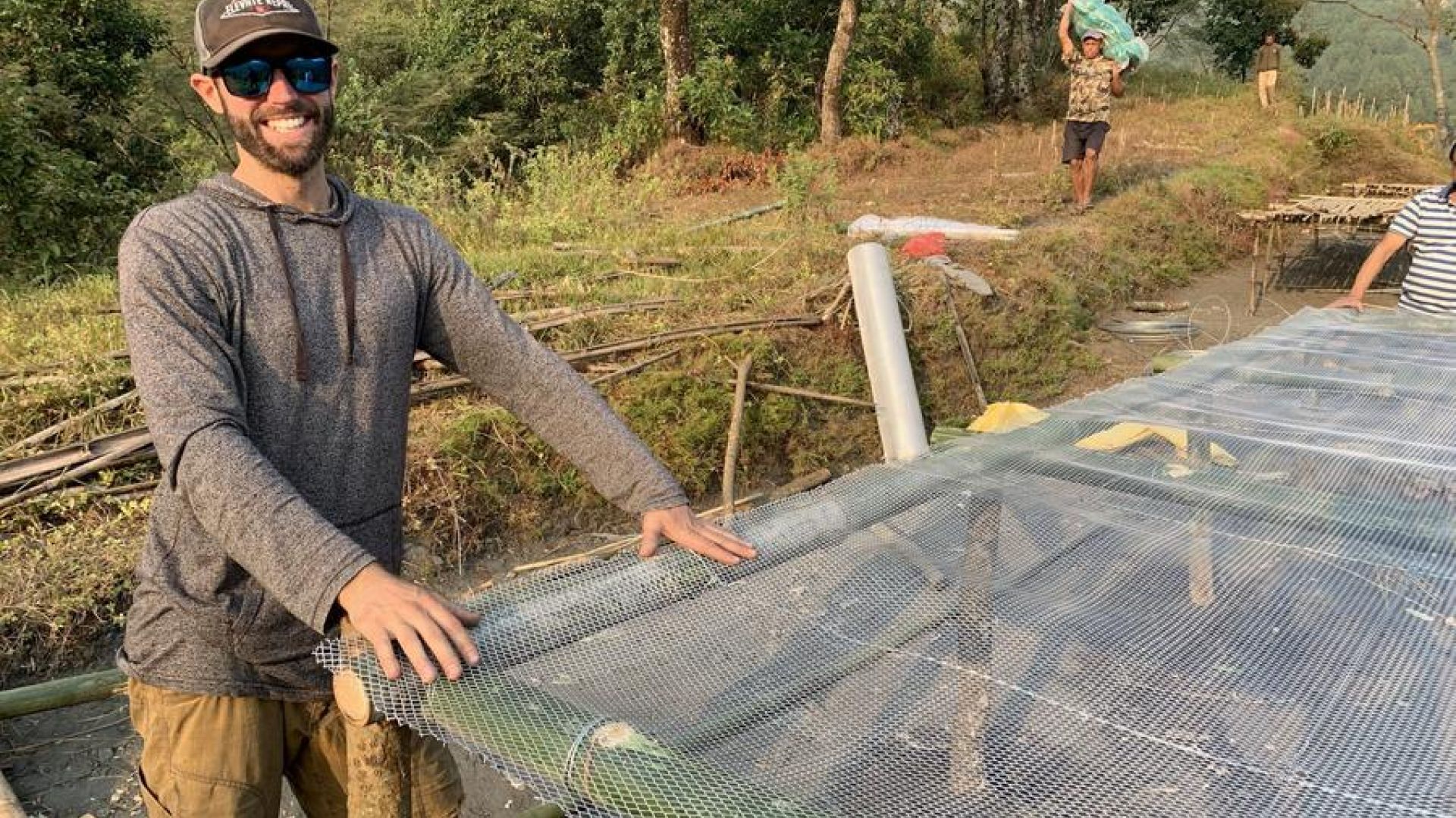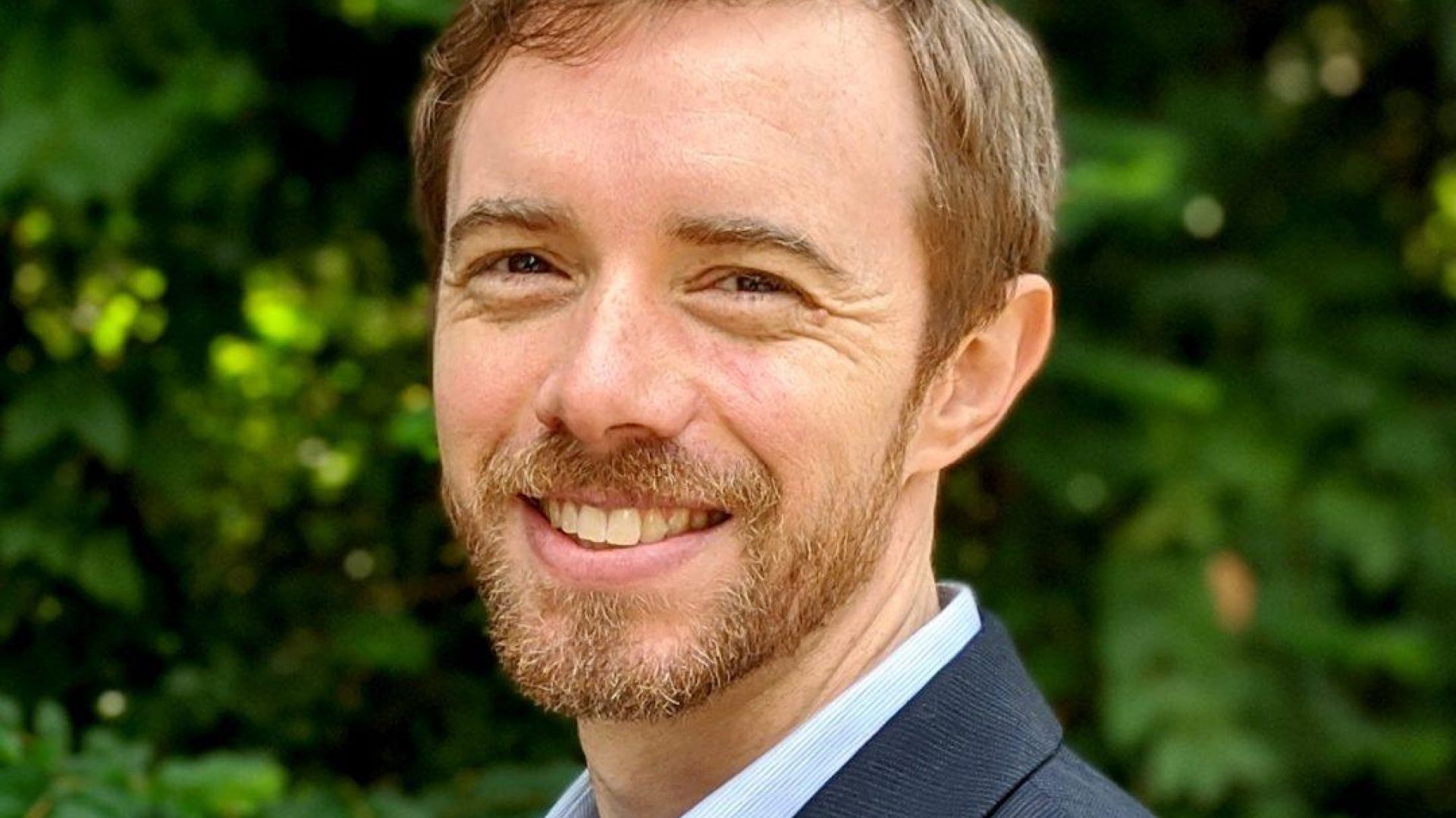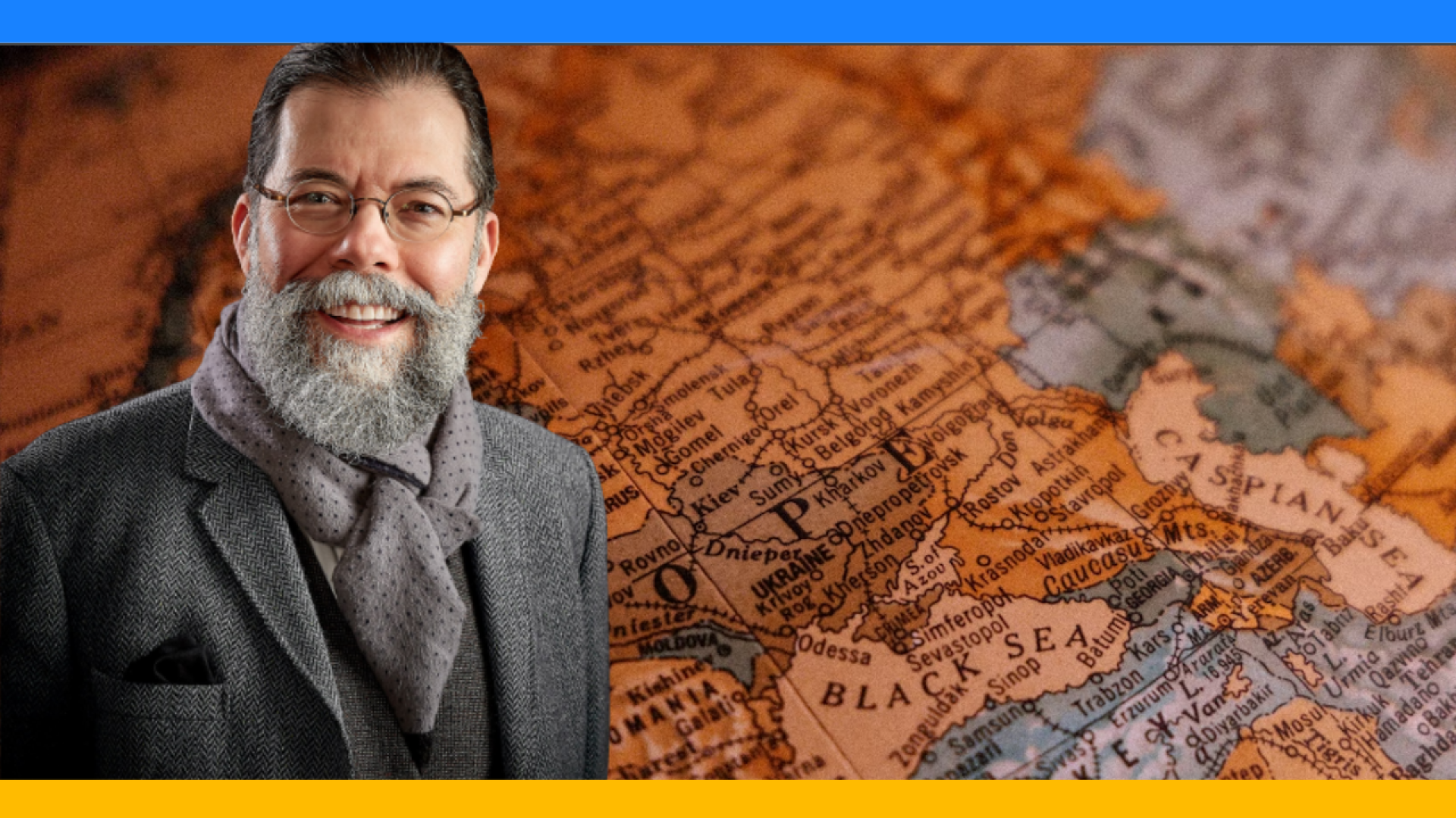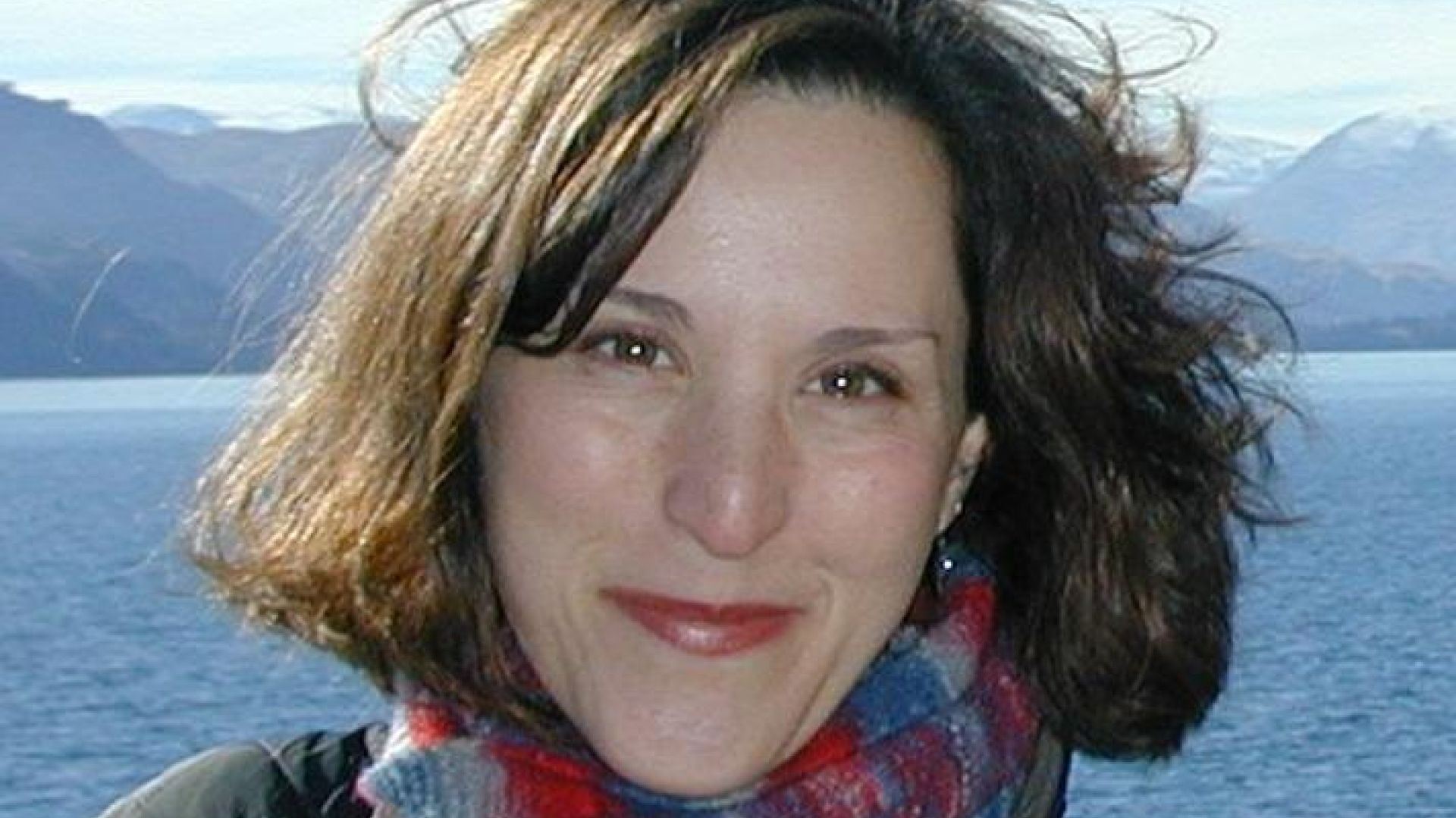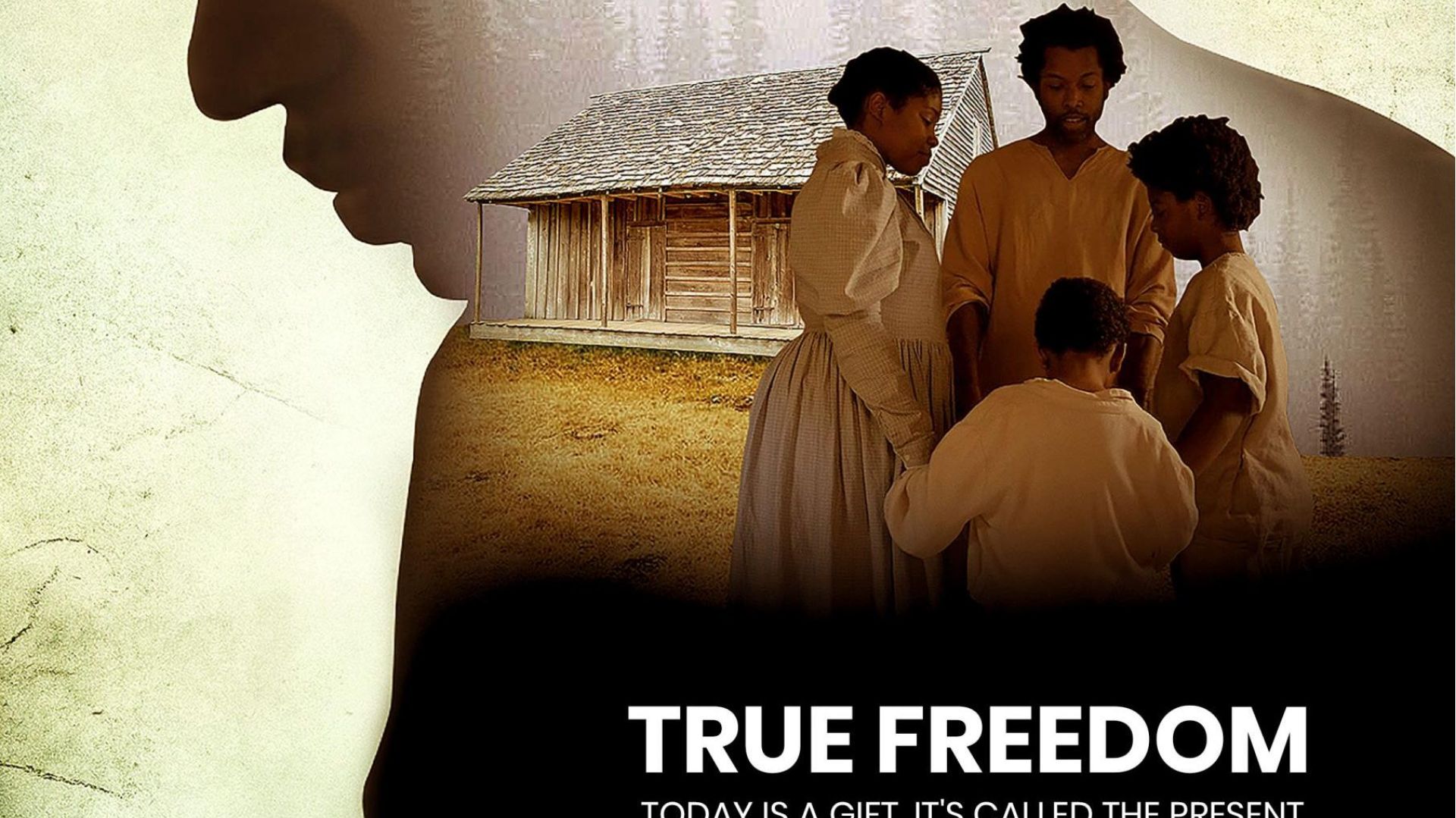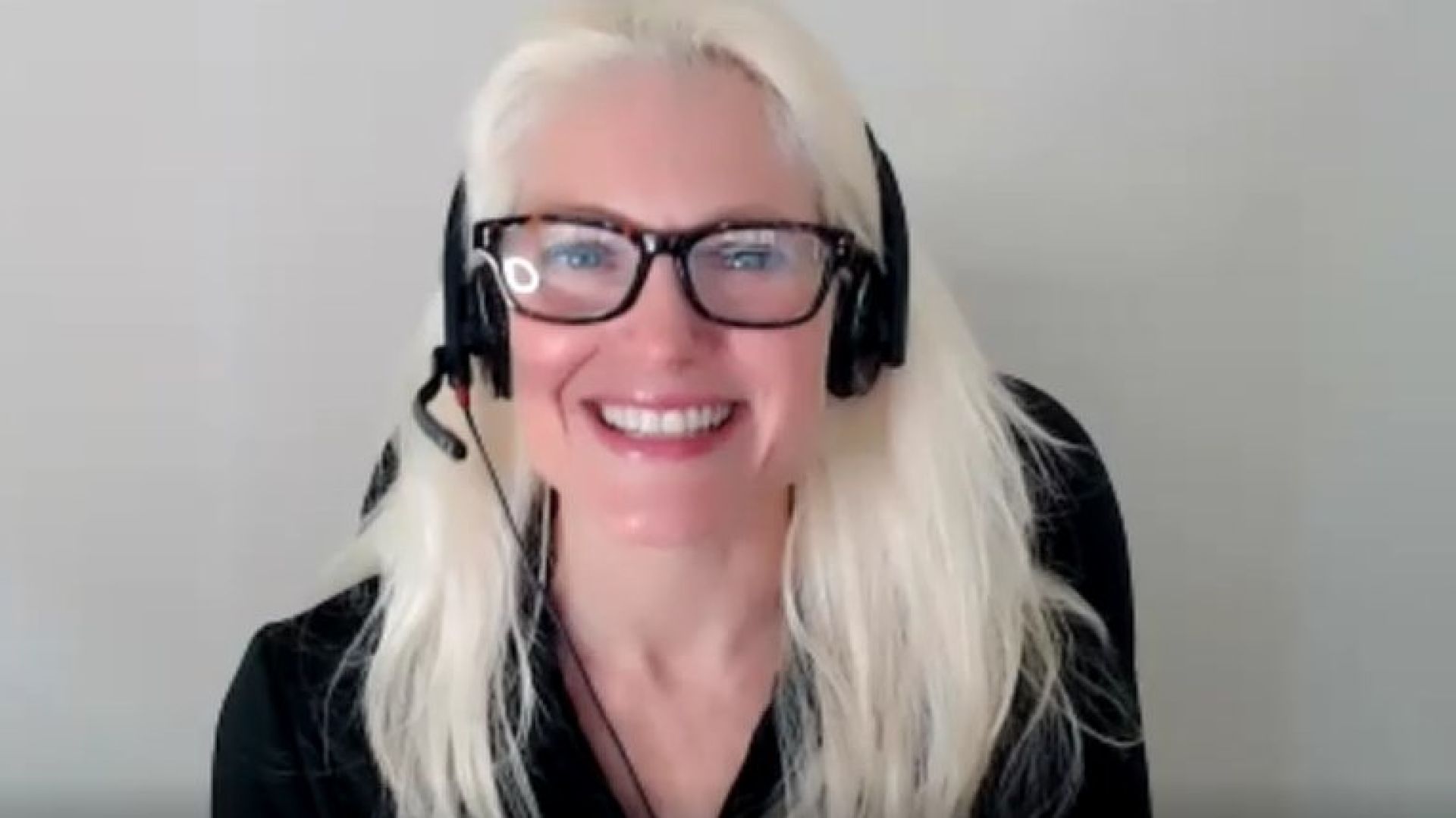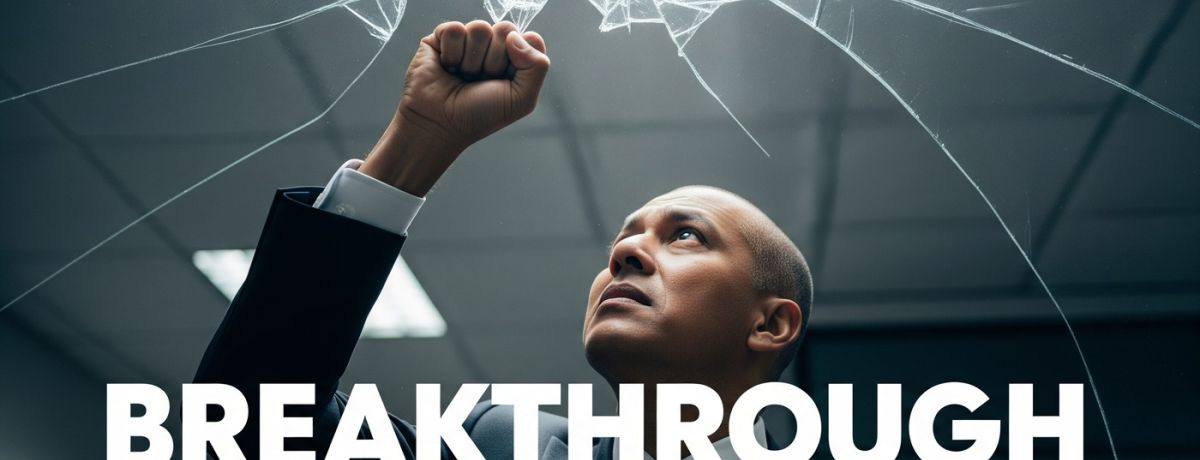
If Your Business Revenue Is Stagnant Year Over Year, Watch This Conversation With Josh Sweeney
Have you ever felt like you hit an invisible ceiling?
One minute, you’re doing all the right things. You’re networking, driving revenue, and your company is growing year over year. You're successful.
Then, boom. You're out of time.

You're busy dealing with HR issues, delivery, and scaling. You stop doing everything that got you there in the first place. For years, your company's income has been stagnant. You can't get over the hump.
So you start grasping for sales and marketing solutions, chasing shiny objects like ads or SEO, hoping something will fix it. But it doesn't.
This video explains why that approach almost always fails. It’s a common occurrence we call the "founder plateau."
In this Listen-To-Learn episode of the Share Life podcast, you'll discover:
- Why B2B is about trust and relationships, and trying to use low-trust marketing tactics can cost you hundreds of thousands of dollars.
- The "delegate and ditch" mistake nearly every founder makes when they hire their first salesperson.
- How you can be wildly successful with just one sales channel, not the ten everyone tells you that you need.
What if the key to breaking through isn't adding something new, but doubling down on what got you here in the first place?
Find out how to get off the plateau and start growing again. Watch the full conversation now.
P.S. If you’ve ever tried hiring a marketing vendor or salesperson and felt like you just blew a lot of money, this video explains why it wasn't entirely your fault—and how to finally get it right.
- Watch: Click here to watch this discussion on YouTube directly, or click play on the embedded video above to begin streaming the interview. Click here to subscribe to my YouTube channel.
- Listen: Click here to listen on Spotify directly, or click play below to begin streaming immediately. You can also find this discussion on Pocket Casts, iTunes, Spotify, and wherever you listen to podcasts under the name Share Life: Systems and Stories to Live Better & Work Smarter or Jason Scott Montoya.
Connect With Josh Sweeney
Additional Resources
-
Watch My Previous Conversation With Josh: Talk Is Cheap, Take A Positive Action Instead
- Book | Entreleadership by Dave Ramsey - affiliate link
- The Sales Acceleration Formula | Mark Roberge | Talks at Google
Podcast Episode Transcript
(0:00) Josh Sweeney: The founder plateau is where the founder goes out, does all the networking, and drives all the revenue. Then boom, they're successful and also out of time. They're busy dealing with HR issues, delivery, and scaling. And then what happens is they stop doing sales. They stop doing everything that got them there, and they start grasping for sales and marketing solutions. (0:26) Jason Scott Montoya: Welcome to a listen-and-learn episode of the Share Life podcast. I'm Jason Scott Montoya, and I'm speaking with Josh Sweeney of Founder Scale about B2C versus B2B revenue generation today. (0:38) Jason Scott Montoya: Josh, say hello. Josh Sweeney: Hey, how's it going? Jason Scott Montoya: Josh is the president at Founder Scale, which helps companies scale their revenue in a repeatable way with a proven sales system. He soft-launched Founder Scale in 2020 after selling his company in 2016, and he was on the Share Life podcast soon after that transition. If you'd like to go back and listen to our conversation, it's episode 35. In 2020, that pandemic year is really when I launched the podcast, and I've since done another 120 episodes. In this discussion, we're going to talk about B2C versus B2B revenue generation. (1:09) Jason Scott Montoya: To get us started, I want to read a passage from my second book, The Jump from Chaos to Clarity for Your Striving Small Business. This comes from chapter two, and I thought this perfectly aligns with Josh and Founder Scale and the work he's doing. (1:25) Jason Scott Montoya: "Bang. That was me hitting the invisible ceiling with Noodlehead Marketing, my established small marketing company. We had grown year over year until finally, I hit my limit. My approach to leading and managing got me to my current level of success, and it kept me busy, but it wasn't moving us forward towards sustainability and growth. For three years straight, our company income was stagnant, and we couldn't get over the hump. It turns out this stuck point is a common occurrence with founders. How we initially fueled our success worked, but the same way fails to sustain and grow. Something is missing. Rather than being content with the success we have, we are frustrated and can't elevate beyond the ceiling. Instead of dealing with the root issues, we become easily distracted, chasing shiny objects, ideas, opportunities, people, and technology to alleviate symptoms but fail to reach that elusive sustainability. Thus, founders enter the year of wandering in circles. They're changing things, shuffling people and systems around, but are never genuinely moving the business forward. This unfolding change can last years, and for a handful of founders who fail to address the root problems, decades." (2:32) Jason Scott Montoya: So, Josh, what are your thoughts about that? Talk to us about this idea, the ceiling. (2:35) Josh Sweeney: Yeah, it's really interesting and very affirming to hear when another founder came to the same conclusion because it sounds like you came through it through experience. I had the same experience with my first company and eventually broke through that ceiling. What we talk about and how we've named what you're talking about here is we call it the founder plateau. (2:53) Josh Sweeney: So the founder plateau is where the founder goes out, does all the networking, drives all the revenue, and then boom, they're successful and they're also out of time. They're busy dealing with HR issues, delivery, and scaling. Then what happens is they stop doing sales. They stop doing everything that got them to that point, and they start grasping for sales and marketing solutions, at least in our space. It's interesting to see how many times that challenge has come up, and it's so common for founders to hit that plateau. (3:30) Jason Scott Montoya: Yeah. And I think part of the reason that when we're in that place we grasp for all these solutions is we think they're going to solve it, but we're missing something. Changing things won't create the outcome we're looking for. It has to be the right type of change. In the book, one of the things I talk about is that change is almost internal to the founder. Something in them has to change. So talk to us about that. (4:01) Josh Sweeney: I think there are two core aspects there. The first one you nailed: the founder. It was interesting when we started Founder Scale, we thought, "Okay, everybody claims to have all these lead generation solutions. You just pay them money and they'll help you generate leads." Our perfect client is actually a company who's tried that three or four times and realized it's not as easy as the market might have you believe. What we found in working through what really works for founders is one is the mindset. A lot of founders will continuously reflect on what got them there, but then they're doing something fundamentally different now. (4:43) Josh Sweeney: Networking and going to events got them to this point, and then they wake up and try to jump this chasm and just start doing ads now, or just start doing SEO. It's like you're just starting something completely shiny to try and solve a problem when you know what got you here worked really well. Mindset, like you said, is a big piece of it. The second thing we look at is what they need to grow and understand from a revenue perspective. How did they get there, and how do they continue to leverage what got them there instead of chasing a shiny object or a quick-fix solution? (5:24) Jason Scott Montoya: It's funny because you use the word chasm, and the first chapter is "Facing the Chasm." (5:30) Josh Sweeney: Wow. This is like a mind meld here. (5:37) Jason Scott Montoya: Another thing that comes to mind is particularly with internet marketing. Over the years, I've stumbled, I've done things—creating a blog post, doing a social media post, something on YouTube—and I hit success. I think I kind of figured out the success, so I sort of bookmark that and think I'm going to come back around to that later on. But when I come back around to it, that tactic doesn't work anymore. Because things move so fast, I realize I should have just milked that until it ran out and then moved on, versus bookmarking it and trying to come back later. When I first tested Instagram Reels, I was getting thousands of views. Now if I can get 200, I'm like, "Wow, this is a good video." So something that worked several years ago really easily doesn't necessarily work as easily now. Talk to that idea about how sometimes the success is an external factor, and we absorb it as if it's something I did. (6:55) Josh Sweeney: What we like to do is figure out what works, and we also like to be really clear about defining what works for a founder. In our space, when I use the word "works"—or let's start externally. Somebody goes, "Oh well, I did a bunch of social posts and I got a lead. It works," right? They're claiming success. For us, something that works in sales or marketing means it generates ROI. I spend a dollar and I get three in return, including the cost of the time and the people. That's what defines something working from a sales and marketing perspective: that ROI. (7:34) Josh Sweeney: So what we like to do is really just double down. We look at and go back through where the founder or the company received their leads and their deals for the last three years, and we find the pattern and say, "Okay, how would we double down on that instead of doing a shiny object over here?" Then from there, we ask, "Okay, well how can we start to test out other areas?" Like with what you're talking about, should we go test social? Should we test ads? But don't get off track with what's working. It's the Pareto principle. 80% of your work should go to the thing you already know that works really well. (8:16) Josh Sweeney: That goes back to what we were talking about earlier with mindset. We really like to figure out what works and how we stick to that. How do we brainstorm how to do it? Because a lot of times people don't know how to double down in a given area. They don't see that pattern or path. So those are all things that we've worked through before and helped them through that journey. (8:37) Jason Scott Montoya: You're hitting on a key theme, which is learning to let go. When I had my marketing company, I did shut it down in 2014 and I ended up transitioning to become a freelancer. In your case, you sold your company. Letting go of the company really felt like a death in my case, but through that process of letting things go that I was afraid of letting go, the world doesn't end. New opportunities come, and everything is better on all fronts for the act of letting go, which is a leap of faith and facing those fears. I'd be curious what your thoughts are on the importance of letting go in all of this and whether you see that as a core dynamic at play when it comes to founders making that level up. (9:42) Josh Sweeney: What immediately comes to mind for me is when I do my workshops, I have this slide and it shows different companies at different revenues. It has a column for less than a million, a column from one to three million, and three to ten million, which is a big range. What I show on that slide is the companies under a million usually get the majority of their leads through one sales or marketing channel. The companies from one to three million usually get it from one to two channels. (10:16) Josh Sweeney: The market would have you believe you have to be posting on social, doing newsletters, and networking, and you have to be in all these different places doing all these things to be successful. There are some compounding effects for sure as you scale up, but what we find in the data for all of our clients is that you can just do one thing really well and let go of all of those other things if you're sub-million. When you let them go, there's a sense of freedom there. I was working with a client the other day, and they have roughly a five-million-dollar company, and the founder wants to do all of these different things in sales and marketing, but all of their leads come from three sources. (11:07) Josh Sweeney: Imagine how freeing it is to just focus on those three, hire people that know those three, and not worry about all the other opportunities everybody's hitting you with. When you do it really well, it is freeing to let go and really focus on the things that work and not be bothered by all the noise that's out there. (11:36) Jason Scott Montoya: It sounds like in a lot of ways, you're helping founders learn to trust again. (11:49) Josh Sweeney: It's interesting to dig into that. I'll use the first thing that comes to mind with our B2B founders. They grew the company through networking and their relationships, and then they went and tried a lot of sales and marketing tactics, blew a lot of money, and didn't get ROI. So immediately, they don't trust anything anymore. They don't trust the vendors, they don't trust hiring, and they're back at that plateau again because of trust. (12:15) Josh Sweeney: So when we come in, I think we can help with that trust factor because we're like, "Hey, you were already on the right track. You just didn't know how to double your efforts because of the time factor. So let's trust in what got you here and double down on that. Let's find other ways that are adjacent to complement how you're doing sales and marketing and then build that trust back up." I like the way you phrased it. I haven't thought about it in that way, but it definitely has some correlations. (12:50) Jason Scott Montoya: Part of that has to do with them having to trust you enough as a starting point. There might even be things they did that didn't work, but the way they did it was the problem, not the thing itself. If they can trust you enough to revisit that and try it in a different way, they can see revenue growth in ways that they would have never thought possible. (13:20) Josh Sweeney: That's very common. If you say, "Have you tried LinkedIn outreach?" Everybody's like, "Oh yeah, I've tried that. It didn't work." What we find is, well, it's how it was done. If you build a list and you just do cold outreach to thousands of people and go, "Well, it's just a numbers game," then yes, it has a very low likelihood of working. (13:54) Josh Sweeney: What we do is say, "Okay, what else are we doing? Well, you've been part of the Chamber of Commerce for four years. Have you met everybody in the chamber? Would it be helpful if you met every business owner in the chamber?" And they say, "Well, yeah, that's how I built the company. I get most of our leads from the chamber." "Okay. Well, what if we merged the chamber with the outreach on LinkedIn, but we only did it to have one-on-one meetings with people that were already in your peer group?" (14:23) Josh Sweeney: What we find is the combination of those all of a sudden works. It's like, "Hey, I'm a member of the chamber. I'm looking to meet every member, hear how it works for you, if there are events you really like more than others. I'd love to do a 30-minute coffee meeting." And all of a sudden, LinkedIn is a great medium that you can use. So, how it's done matters profoundly. I think that's a big part of rebuilding that trust. (14:57) Jason Scott Montoya: I think the other piece of that puzzle is the outcome you're wanting and whether or not you have the right outcome and the right path to that outcome. For example, if your goal is to get meetings with people, does LinkedIn work for getting you meetings? Yes, it does. But if you're trying to generate sales and you just think one automated outgoing message to a stranger is going to generate that, you might need to reapproach your desired outcome and the way to get to that outcome, maybe breaking it into smaller pieces. (15:58) Josh Sweeney: There are lots of ways to get there, and some are significantly more efficient. You could run LinkedIn outreach in perpetuity forever, and every time you get through the whole list, go back through the list, but it's probably not going to have the outcome you want. That's a challenge because a lot of vendors claim that they have some secret sauce, and then you try again and again. What I like to tell a lot of our founders is if the vendor or the solution only talks about a medium—meaning email, SMS, calls—if the majority of their focus is on the medium, it's probably not going to work the way you want. You really want the medium and the strategy of how it works with how you've built the company. Those combinations are going to have a more profound impact. (17:04) Josh Sweeney: Then, resetting the expectations as well if you're trying to just go directly to a lead and close a deal in a way that you've never done it before, as opposed to building relationships. B2B is a transfer of trust and relationship building. If it's not that, it's probably not going to work as well as everybody's going to claim. It's the overlap of a few things that really make it all come together, and I think that's really the nuance a lot of people don't dig into in the sales and marketing space. (17:31) Jason Scott Montoya: I would also add, don't underestimate really basic goals. A simple one, for example, is just reminding people that you're alive. That's half the battle. If you're active on LinkedIn and you're at least accomplishing that goal, that's at least one thing. But I think a lot of people look at the algorithm or some of these technology systems in a superstitious way. They're like, "I have to make a sacrifice to the algorithm god and then he'll like me and I'll get some kind of reward." But that tends to do the opposite of what you're talking about, which is blaming something externally instead of looking inwardly and going, "Maybe the way I'm doing this is a problem, and if I want to get better at it, then I need to learn and grow and keep iterating." (18:35) Josh Sweeney: We've named this phenomenon for founders "delegate and ditch." What we find is a lot of founders do what we call delegate and ditch. For example, "I hired a salesperson. Great. I don't have to do all this anymore." Delegate and ditch it. They don't become the coach, the mentor. They don't plan to spend the next year with that person side-by-side. They just offload everything and then wonder why it doesn't work. They do it with marketing vendors. "This SEO person said they were going to solve my problems. I'm going to write a check. They're going to make it rain leads." That's delegate and ditch. (19:24) Josh Sweeney: You're delegating and ditching to the algorithm gods or social media. It's like, "I'm just going to do all this and it's going to do this other thing," and that's just not true. It's really looking internally. We tell people when they're hiring their first salespeople, you need to be a mentor, not a manager. If you decide that for the next year you're going to be a mentor, not a manager, your chance of success with that salesperson goes up infinitely higher. If you think you're just going to hire a salesperson and delegate and ditch, it's probably not going to go as well as you think. There are all kinds of ways that we as founders delegate and ditch. I know why, too. It's like a blowoff valve. You're just so tired of grinding, you're hoping somebody can take over this piece for you. Unfortunately, that's just not normally the case. You really have to walk the journey with them until they've taken over the items you need in the way that you need to make that successful. (20:39) Jason Scott Montoya: There's a passage from my book where I talk about this idea, and it actually comes from Dave Ramsey's book EntreLeadership. Have you read it? (20:49) Josh Sweeney: I haven't read that one, no. (20:50) Jason Scott Montoya: He uses a rope as a visual to convey the concept of delegation. In the analogy, the rope represents responsibility. When it comes to delegation, he suggests we hand someone the end of the rope and then you feed it to them until all we have is just the end. As a business owner, I went through a season where I threw the rope at my team, like you said, and I walked away, usually without communicating expectations. If I came back and they had not done what I thought they would do, I was disappointed. Doing this repeatedly caused me to overcorrect and become a catalyst for the opposite, where I'm holding all of the rope except they're holding the end, and what are they going to do with that? (21:32) Josh Sweeney: Yeah, I like that. I need to add that to the list. (21:43) Jason Scott Montoya: So let's shift into talking about revenue generation. There is a distinct difference, although there are probably some overlaps, between B2C and B2B revenue generation. Talk to us about what makes them fundamentally different and also where they're similar. (22:01) Josh Sweeney: One thing we learned early on, I learned it with my last company and I learned it working with founders, is when a founder looks out into the market for sales and marketing, there's a perception that almost any of these solutions can work for any business. We found it's really not true for the most part. There are unique instances where certain items work more commonly for B2B and more commonly for B2C. Knowing just that difference can save a significant amount of money. In my first company, I spent over $300,000 learning this lesson until I learned it and then was able to scale past the plateau from there. (22:44) Josh Sweeney: The core difference between B2B and B2C is that B2B is about trust and relationships. When you're doing a B2B transaction, you're building trust. You're networking and using relationships oftentimes to get to the buyer you're speaking with, and there's a transfer of trust. There's usually more money in the deal, and there's a selection process that comes through that transfer of trust. (23:10) Josh Sweeney: If you look at B2C, there's still a transfer of trust, but there's less of a leap of faith. Somebody's job isn't on the line to see an ad on Instagram and pull out a credit card to buy a $20 item. Whereas in B2B, somebody's job can be on the line, or they're going to be troubled if it doesn't go as well as they want. (23:39) Josh Sweeney: With those fundamental differences, what that means from a revenue generation perspective is that in B2B, what is core to lead generation is feet on the street. It's business development reps, it's networking events, it's people. It's the sales team. When you look at a B2B organization and how the founder grew it, all the leads came in through people networking in some way, shape, or form and building trust. Marketing is a complement to getting more of that done. (24:13) Josh Sweeney: The opposite is B2C. When you look at a B2C framework, the majority of the leads are done through marketing. So the marketing team generates the leads, and that person either comes in and buys and converts, comes into a retail store, or speaks to somebody on the team, like an intake team, depending on if there is at least some level of a buying cycle. When you look at it and really understand B2B is relationship, trust, and lead generation is done through networking and humans, and B2C leads are generated through what you would consider maybe traditional marketing—SEO, ads, things like that—you see how fundamentally different they are and start to realize why the strategies don't necessarily or often do not cross over. (25:06) Jason Scott Montoya: If you have a B2C that is high luxury, high price point, is it more like B2B or is it still distinctly different in certain ways? (25:26) Josh Sweeney: A luxury good... that may be tough for me to answer given that I'm mostly in the services space. There is a transfer of trust, but I don't know if the buying cycle is necessarily the same. I listened to the Acquired podcast, and they had this really good episode on LVMH, which has all these high-end luxury brands. When I think of that initially, what I think of is there is usually a person with means still going in to pay cash or swipe a credit card for a luxury good. Maybe a purse, an outfit, whatever it might be, which is still very different from a B2B sense where somebody had to get referred into a company that's going to make a $100,000 purchase that takes six months to close and there's a group of people that have to approve this purchase. So, maybe a little out of my depth to do a straight-up comparison on luxury goods. But in a lot of ways, there's still a person that has the money that walks into a Fendi and makes the purchase, or walks onto the Porsche lot and buys a Porsche. That's a very different buying cycle. (26:51) Josh Sweeney: We focus in the founder space, so we know what works for founders. I don't try to understand what Porsche does and how they do it. It's fundamentally different, and I think that's important to note. (27:03) Jason Scott Montoya: I think the decision-maker is the consumer, whereas in a business you have more layers. Ultimately, I guess the founder or the president is still making decisions, but there are operational layers to it, plus the outcomes are desired business outcomes which usually involve a variety of working components. (27:28) Jason Scott Montoya: You've talked a lot about B2B being about trust and relationships and B2C being more in line with traditional marketing. Let's dive into the B2B side of it first. If you're a company wanting to grow your revenue and you're either hitting the ceiling or you're not even at the ceiling yet, what are they missing on the trust and relationship side? What's their blind spot? (27:59) Josh Sweeney: There are a few different ones that we see pretty commonly. The first one in a B2B sense is the blind spot of trying to use a low-trust medium to drive leads. For example, we would tell any founder we work with that when you're utilizing capital, organic social media—the act of posting—is not going to drive B2B leads. You can pretty much post as much as you want, but you probably don't have the budget for it. When it comes to comparing against everything else, it's not going to drive the leads you're looking for. There are mediums where the medium is a lower-trust medium for a B2B buyer. Based on who you're trying to speak with, they don't use it in that way. They're not using it for a B2B service selection process most of the time. (28:56) Josh Sweeney: The other thing that we find when we dig into it is there's not a lot of transfer of trust on their website. They don't have sales enablement content. They don't have reviews. They don't have videos. They don't have testimonials. What we find with the clients who have a lot of traction in B2B is they're capturing a lot of that on their website. If you go to, for example, the FounderScaleClutch.co review site, you're going to see nothing but reviews from other founders like you. We reflect on that. We pull that up and say, "These are other founders like you." We don't work with Coke. We don't believe that what works for these big companies works for founders. We show that all of our reviews are from founders. We understand the challenges they're going through. There are a lot of things that you can do on the website. There are lots of ways that you can help transfer the trust and show that this business can grow past the founder. (30:31) Jason Scott Montoya: You say sales and feet on the street drive leads. That really is my inclination. If I were to lose all my freelance clients right now and I just needed to get clients, I'd be on the street, at networking events, I'd be reaching out to people. I would just lean into sales. I would do some marketing stuff to complement that, but marketing is slow. Sales is fast. What do you think about that? (30:54) Josh Sweeney: Totally true. When we meet a founder at first, what we say is you don't need sales and marketing, you need a revenue team. It's not the big company model of your marketing team being an army of 50 people over here and your sales team being these 20 people over here. That's not a founder company in most cases. It's normally a few of each of those depending on the size of the company we're working with. So we say you need a revenue team that's working tightly in concert. We can show you how to make that happen. But I totally agree. If you need more leads as a B2B company, you start going back to where you started. You go to the chamber events, you go to the networking events, you go to the association where you have a lot of traction in a certain vertical or industry, and you just double back down on what got you there. Once a founder realizes that, it often brings them back to where they started, and then they start to see, "Okay, I need to scale that up and complement that process with marketing." Now I have a revenue model that I can go forward with. (32:14) Jason Scott Montoya: They could also define all the pieces, actions, tactics, and roles. They could also start to delegate those roles out. There's one other dynamic. This can be a blind spot. When a founder is doing what we're describing, they have something that even if they delegate this task out, they cannot delegate: they are the founder. Founders often don't appreciate it until we realize there's a weight to that. If you're at a networking event talking to someone, just being the founder is different than if you had an account executive or salesperson doing that same thing. That's a different dynamic. Would you agree with that? (32:51) Josh Sweeney: 100%. In my first company that I grew and sold, I was way off base on this. I would hire a salesperson and say, "We have a quota of half a million dollars." My thought was, "You're doing all the same things I'm doing. You're going to these networking events." While running a business, I closed a million dollars in sales this year, and you have full-time dedicated to this as a sales rep, and your quota is half a million. That should work out in theory. (33:33) Josh Sweeney: I think it's a lot more nuanced now that I've actually scaled past that mindset and helped other founders with it. I actually don't think it's true in a lot of ways. Because like you said, when I walk into the room, it says "owner" on the card, or "president." If I sell to other executives and founders, they want to talk to other like-minded people. They're more willing to have coffee just to brainstorm, whether it's a sales call or not. (34:05) Josh Sweeney: The other thing I missed as a founder is you can quickly reflect on all of your experience. If you have a decade of experience, when anybody asks a question, you have an answer that just comes to the forefront of your mind because you've been doing it so long. Somebody can mention something and say, "Well, have you done something in this industry?" And I can say, "Well, it wasn't exactly your industry, but it was very adjacent in that it was this, this, and this, and here's what we did," and speak the lingo right off the cuff. No problem. Your new hire BD person generally can't do that. Even if they've been in the industry, it's still hard for them to have that skill set and relate it to your company. (34:52) Josh Sweeney: There are all kinds of mindset shifts I had to have, which goes towards that model where now we advise, when we hire BD people, "You're going to be a mentor instead of a manager for the next year. You're going to stand by them. They're going to hear you say these things and be able to pick up on that verbiage." I think those are just two quick examples where the wind is in our sails as the founder walking into these networking events. (35:21) Jason Scott Montoya: Another layer here is just how you structure compensation and develop the game that they're playing. As a founder, as the business owner, you have ownership literally. We financially get the benefits of that if the company is successful. If you don't structure your compensation package with your team, they may not have that same level of ownership in their motivation. What would you say to that? (36:02) Josh Sweeney: There are a couple of interesting things on comp that are really different in a founder company. Again, it's one of those things where you go talk to somebody that's a comp expert and they work with all these large companies and tell you how it should work, and then there's the reality of being a founder company where you have one or three salespeople, but not an army of them with sales managers and things like that. (36:32) Josh Sweeney: The first one that comes to mind that I think a lot of founders do incorrectly is they immediately jump to talking about the commission. Meaning, the game, as you said, is they have some base and then everything jumps to commission. There's this hurry-up-and-sell type of mentality. It's like, "Man, if they don't close a deal in the next three months, this isn't going to work. We need the commission, we need the sales coming in." There's no long-term view of that. (37:00) Josh Sweeney: What we found is there needs to be that ramp-up time. Like we just said, you're not the founder walking in where you have all the right answers and can close a deal in 30 days because you're the founder. It takes longer for those people to understand and learn your business and what to say and what not to say and generate those leads. So we like to build incentive plans where the first portion of learning is actually getting bonuses on doing the activities that lead to the results. We would say, "Okay, you need to have this many calls, this many LinkedIn messages, you need to go to this many networking events, you need to have this many one-on-one coffees." And every month that you do that and hit that, the quota is not a sales quota for the first six months. It's an activity quota for the activities that really turn into sales later. (37:52) Josh Sweeney: When we bridge the gap that way and come up with a one-year plan on how that person's going to get trained and up to speed and start to hit little quotas and get wins along the way, they also feel like they're progressing. The founder can do it with them, which is one thing we advise. We say, "Go to these networking events along with the person. Show how many you actually did to get that result." Now, they also believe that it's possible. There's a lot of competing factors, especially when you're not a large company and can't just point to the person over there and say, "Hey, they hit quota. Why can't you hit quota?" There's not that other person to point to. (38:51) Jason Scott Montoya: I think the activity-based commission idea is really a powerful one because you're focusing on the thing that you know is going to generate the result. If you keep doing that thing, it's going to naturally generate the result. If there's something wrong, you just tweak the activity, and it'll generate a different result. If you focus on the outcome, trying to control the outcome, you can almost self-sabotage. (39:26) Josh Sweeney: You're self-sabotaging because if you only focus on the commission and the sales right out of the gate, then every week, or whatever your rhythm is, you're having a stand-up and talking to that salesperson like, "Where are the sales?" That's what it can feel like if they're not really mentoring them. Eventually, that just grinds on them, and they are not getting any wins. Whereas if you're really coming from a point of saying, "I just need you to make sure you're going to two networking events a week and you're having at least four one-on-ones a week for the first 90 days. Let's just get to there," then you're not overwhelming them with all these other challenges, and they can get those wins. (40:11) Josh Sweeney: What we like to do is bonus them on that. If you hit the early commission—or in the early days, the first 30 to 90 days—we may say, "If you just do that, you get a $250 bonus. It has nothing to do with sales. We're just going to incentivize you on the behavior that drives the results." Whereas if you just keep coming back to them asking if they've closed a deal yet, which is how it comes across a lot of times, then you are just sabotaging it. You're not saying, "Well, what leads to getting those deals and what are you doing about that?" That's more important. (40:48) Jason Scott Montoya: Mark Roberge, the former CRO of HubSpot, has a great talk on YouTube. One of the things he talks about that stuck with me is teaching someone golf. One trainer can look at what you're doing and go, "These are the 10 things you're doing wrong," and try to work on all 10 of them at once. The other one, which he found to be more effective empirically, was you just pick one of the 10 things, focus on that, get that piece in place, then focus on the next one, get that piece in place, then focus on the next one. You work through the 10 versus trying to do all of them at once. I think that's what the system you're talking about allows for. (41:40) Josh Sweeney: Yeah, I think that's a great analogy because a lot of people go into founder or small businesses and say, "You're drinking from the fire hose. We're just unleashing all the knowledge on you as fast as possible so you can get up to speed and get effective as fast as possible." But that's not necessarily the best way to become effective. It's those little things like, "Hey, you and I, a new sales rep, are going to go to two networking events a week together, and you're going to get the pitch right, and you're going to be able to answer all the questions that they have." What happens downstream? Well, later when you're on a sales call and somebody has a similar question, you're going to be able to answer it. You start with the first pieces and you get good at that, and then you move into deeper discussions instead of just trying to overwhelm them. I think that's another thing that a lot of founders, including myself in the past, have taken for granted. It seems easy because they have all this knowledge, but they sometimes forget that they built that knowledge over years, sometimes decades. (43:07) Jason Scott Montoya: So let's shift to B2C. That is more the marketing side, I guess, and that's probably where social media can really hit it off. Marketing drives leads versus marketing supporting leads in B2B. Dive deeper into that. (43:24) Josh Sweeney: When we do the comparison, when you have B2B on one side, the top areas we see people driving leads are networking events, conferences, things that are one-to-one, feet on the street. When we look at B2C, we see a lot of other strategies work, meaning we will see things like ads work, whether that's Facebook or Google ads. You're going to have a lot more impact through doing that. Even with B2C services—health, wellness, and fitness—ads work very well. SEO starts to work a lot better. SEO is one of those crossovers where we do see it work in B2B and B2C, but it works significantly better in B2C. The return on investment comes faster, whereas in B2B it's a lot more nuanced to make B2B really work from an ROI perspective—the time and money you put into it to the deals you get. (44:29) Josh Sweeney: SEO and ads are very common. Whether it's organic social or social ads makes a big difference. The product mix can make a big difference in there. But you're getting your leads through what you would consider a different marketing channel where the marketing is what's driving the leads, not the person going and networking. (45:07) Jason Scott Montoya: Oh, definitely. If you think about somebody seeing an ad, you're targeted with that ad, and the targeting's gotten even better. You could have searched for something on your phone and now you're getting an ad. They already know you kind of want to buy, and it's $20. There are thresholds in all areas where, depending on the buyer, there's a threshold in which somebody is going to pull out their credit card and buy without even batting an eye. If you're selling goods B2C and it's to people with a higher income, the threshold may be $100. Anything under $100, they're going to see the ad and say, "I want that. I want to try it. I'm willing to go buy it and find out whether I like it." That's very different than the buyer journey for something B2B. (46:12) Jason Scott Montoya: If I was selling a book to a business owner, would you call that just a book being B2C, or is it because of who I'm selling it to that makes it B2B? (46:35) Josh Sweeney: I've heard some compelling arguments that would be B2C. The framework I use is where is the money coming from? If the money is coming from a business, like that founder is getting a book and they're paying for it out of their business, then it's part of a B2B transaction. I think there's nuance. A book may be a hard one because if I wanted to buy a book, I just buy a book. If it's $20, it could come out of the business, it could come out of my personal account. It's kind of inconsequential. (47:06) Josh Sweeney: But let's up the game a bit. Let's say you're joining an association that is $6,000 a year that is only built for founders to join. There could be a compelling argument that that's B2C because the founder wants to join it, and they are writing the check out of the business, but it's 100% their decision and they have all the latitude they want. However, if that person didn't have a company or their company wasn't successful at the moment and they didn't have the money in the account, would they still write that $6,000 check? The writing of it is more aligned with the company having the money than them personally having the money. (47:49) Josh Sweeney: I think you can get into a lot of nuance around whether you qualify it as B2B or B2C. But when you really want to start to look at how you spend money in sales and marketing, you can look at that buyer journey. You can look at whether there is a selling process and a selling cycle. Does this involve trust and relationships, or is it a little more transactional? The difference between trust and relationship and more transactional really tells you what medium or type of sales and marketing strategy you have at the end of the day. (48:21) Jason Scott Montoya: Part of me almost wonders which of those strategies is more effective and kind of trumps the other. (48:42) Josh Sweeney: One strategy is better than the other when you look at what you want to sell. Let's say you have two parts of your business. You have a book you want to sell that's the first part of the sales ladder because it's a low-cost intro to your services, but then you have a $10,000 a month service you want to sell. It's going to be very different. You can probably use your standard B2C marketing tactics and do ads to promote the book, and then you can upsell from there. But you're going to have to go past the book to build the relationship with the person. (49:21) Josh Sweeney: So, it might actually be better for you not to do B2C tactics and sell the book. What's probably actually better is that you have a cover letter and you meet an entrepreneur, a founder, whoever the buyer is, and you mail them the book with a nice message. Then you build a relationship from there. So, which one's better? That you got your $20 for the book, or that you sent them a book with a great letter and you started a relationship that's going to generate a $10,000 a month opportunity? That's what we have to dig into as founders to understand what's really going to drive the revenue for the business and what is your goal. Is your goal to sell a million books, or is it to land $120k contracts? Very different. (50:01) Jason Scott Montoya: That's similar to my first book, called Path of a Freelancer. I've sold more of that than The Jump, but I have one client that I did a speaking event for with this book who has paid me like seven grand. So, this book generated $7,000 in a way. But that was my goal with this book; it was more of a fancy business card, so to speak. (50:32) Josh Sweeney: It goes back to what we talked about earlier around the 20% that drives 80% of the results, and the shiny objects we talked about. Do you want to spend time trying to figure out how to sell books for $10 and $20 each, or do you want to spend time utilizing your book to sell $7,000 deals or $100,000 deals? One can distract from the other significantly. It just depends on what your business model is. (51:09) Jason Scott Montoya: What else when it comes to B2B and B2C would you want to emphasize or dive into that we haven't already done to close out the topic here? (51:16) Josh Sweeney: I think the first thing is just founders knowing that there's a fundamental difference between the two. Just knowing that alone and really looking and saying, "When I look at a vendor, when I hire somebody, when I hire a sales or marketing person, can they articulate the difference in B2B and B2C and how that fundamentally changes the strategy?" It's a lot harder if you look out and observe that the vendor you're looking to hire has nothing but B2C logos on their website that are large companies with $100 million in revenue, and you're B2B and under $10 million in revenue. You really have to key in on that one thing. (51:59) Josh Sweeney: The other thing I like to leave behind is it's not that there are not enough options on how to solve this. It's like the book strategy we just talked about. It's doing something really well and ensuring it works. It's not spreading yourself too thin. That's another unique area. As a founder, you run out of time, and then you have limited resources. Every business has limited resources to a degree, but in the founder instance, they're even more limited from a capital perspective. You're not looking to see what the 10 things are that could work. You're really looking to know what the one thing is that works really well. And if you just doubled down and did more of less, you would be very successful. Over time, you can add the second thing. Over time, you can add the third thing. That's okay. Don't get caught up in what everybody's telling you about having to be on all these channels at the same time and making it all work together, because what we find in the data is fundamentally not true. Most founders we work with have one thing they figured out how to do really well, and they're working on a second or working on a third after they've really created a repeatable process. (53:50) Josh Sweeney: What we always joke about is any agency will give you the big, amazing plan and be like, "Hey, if you just spend $100,000, we'll make all this happen." What we find is it's more about setting a budget that you can stick to in sales and marketing in perpetuity and going on that journey, and then solving problems as they come up, not dumping all of your budget into one thing hoping it works. It's where the solution and the opportunity meet the capital that's available consistently over time that you start to really figure out repeatable revenue. That utilization of capital is another challenging part. If you know you only have $10,000 a month in perpetuity for sales and marketing, you're going to make fundamentally different decisions on how to utilize that than if you have $200,000 a month. (55:04) Jason Scott Montoya: If someone thinks, "Wow, Josh, I think you could really help me. My company is hitting that ceiling or we're facing some challenges," who's a good fit to work with you? Where in their journey, what are some milestones where they might be that you can really interface with them to get the most impact? (55:23) Josh Sweeney: We find our best clients are actually founders of businesses that have tried to scale past themselves. They've tried some sales tactics, they've tried some marketing vendors, they've maybe hired some people internally, hired externally, and really have discovered that it's not as easy as the market would have you believe. At that point, we're a really good guide because they've figured out this is a tough challenge and they want somebody to walk that journey with them that's been through it and helped other founders. That's the best time for them to come to us. (56:04) Jason Scott Montoya: I saw this meme the other day on Facebook. It was a young person saying, "Don't tell me what to do," and then it was an older person saying, "Tell me what to do exactly and the order to do it in." Once you need help, it's like, "Just tell me what to do and how to do it." I'm hearing that if someone's having this problem, they want to hire you to help them solve it. Is there any category of businesses? Do you work with B2B and B2C or do you focus on one or the other? (56:37) Josh Sweeney: We work with both B2B and B2C. I would say the most common is services companies. That's really where we stick to because there is some buying cycle in there. On the B2C side, we've had a lot in health, wellness, and fitness, and other B2C types of services like that. On the B2B side, we've worked with a lot of different companies, but a lot of those are professional services-oriented where we've worked with agencies to help scale up, we work with financial services, and a number of different B2B services companies. I would say that's the most common theme. We understand the services business, how it comes together, and the nuance of B2B and B2C so we can put together really good strategies and plans to make those successful. (57:34) Jason Scott Montoya: If someone is interested, what's a next step? Should they go to your website? Should they reach out to you on LinkedIn? (57:40) Josh Sweeney: You can definitely go out to our website, founderscale.com, and hit the contact and just say, "I want to speak to Josh. I heard him on the podcast and want to talk to him about some of these things he said." You can also find me on LinkedIn, Josh Sweeney, and reach out that way, too. (57:57) Jason Scott Montoya: Is there anything that you're going to be doing, anything you're launching that you want to highlight or share with us? What's ahead for Josh? (58:03) Josh Sweeney: I think the biggest thing for me is I'm doing a lot more speaking events and hands-on workshops where we actually go into a business with their sales and marketing team, their founder, and their head of finance and really help them understand what the strategy should look like. We have a book, we have a workbook, and I'm enjoying doing a lot of those because it really gets the team aligned across all of those different areas of the business and helps them understand how they impact each other. I'm doing those as private workshops and public workshops and speaking events. So I'm always looking for ways to do speaking events and help out any association, chamber, or group where we can really help more founders that are out there. (58:50) Jason Scott Montoya: Okay, cool. Awesome. Well, thank you so much, Josh, for sharing your wisdom with us today. This has been a listen-and-learn episode of the Share Life podcast. I'm Jason Scott Montoya, and we'll see you on the next episode.
